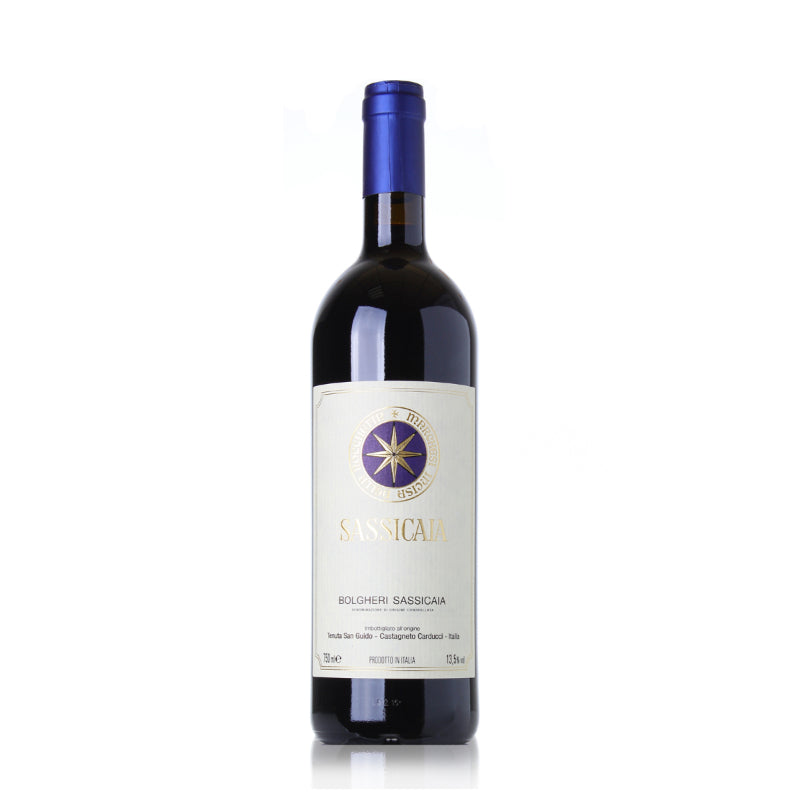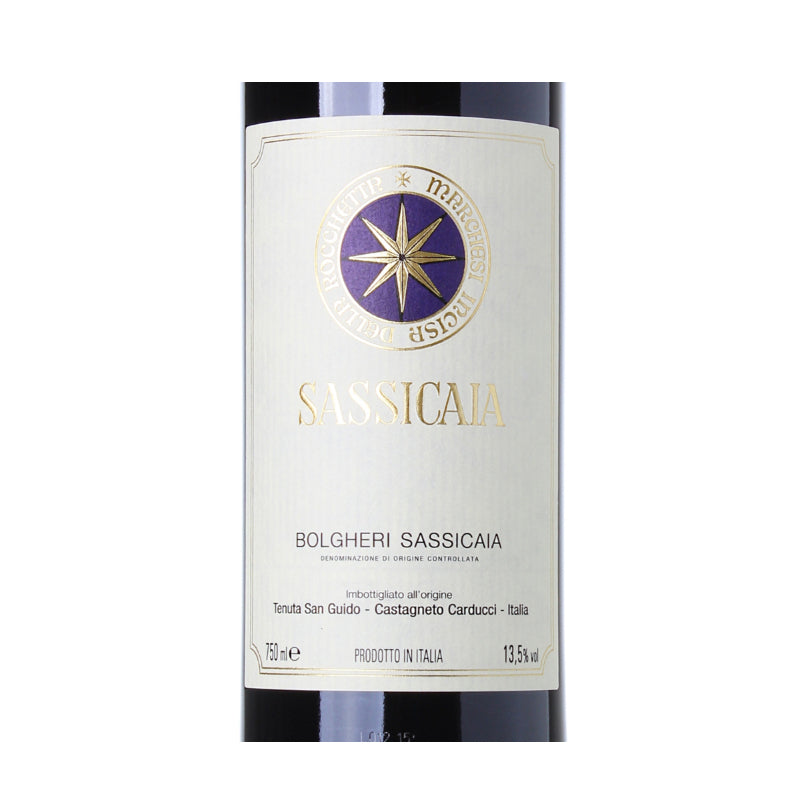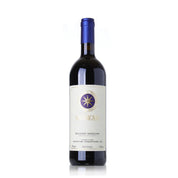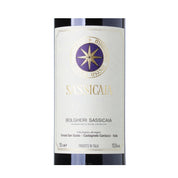Tenuta San Guido Sassicaia 2020 750ml










The 2020 Sassicaia is a vibrant, classic Tuscan red with juicy dark fruits, cedar, and fresh piney spice. It’s full-bodied but elegant, with bright acidity and smooth tannins. Ready to drink now if you like lively wines, but it’ll get even better after 2027. Handpicked grapes, aged 25+ months in mostly new French oak, making it balanced and polished—a great pick for fans of refined, powerful reds.
Jamessuckling.com | JS 97
Published: Nov 28, 2023
A very perfumed Sassicaia on the nose with forest floor, citrus and deep dark fruits. Blackcurrants. Cedar and black tea. Some balsamic. Pine needles. Full and very succulent. Really long, structured and complete. Tangy and energetic with a linear line of fresh tannins and acidity. Very Sassicaia throughout. 85% cabernet sauvignon and the rest is cabernet franc. Very attractive now in a youthful and vibrant way, but this will be better in three to four years. Try after 2027.
The Wine Advocate | RP 96
Published: Jan 05, 2023
Drink: 2024-2042
The Tenuta San Guido 2020 Bolgheri Sassicaia speaks to those who seek a more voluptuous, opulent and, ultimately, more accessible wine. This vintage is a precise reflection of Coastal Tuscany, as opposed to a more generic "Tuscan" wine from elsewhere in this large central Italian region. You taste the ripeness and soft fruit weight that comes from a coastal appellation with especially bright luminosity and warm Mediterranean offshore breezes. Sassicaia from the cool vintages is a famously reticent or withholding wine in its earliest years, requiring a long lead time before it eases into an ideal drinking window. That's definitely not the case here. This wine is beautiful and compelling straight out of the gate, showing a lovely mix of dark fruit, oak spice, balanced freshness, textural richness, soft tannins and an expertly contained 14% alcohol content. The wine's immediate character is what distinguishes this vintage, and I wouldn't get too fussed by exaggerated cellar-aging ambitions. The wine awards sheer pleasure in its current form, with dazzling primary fruit and soaring intensity over the near and medium term.
Decanter | D 96
Published: Jul 1, 2023
Drink: 2023-2035
Even in a round vintage like the 2020, Sassicaia, upon release, appears taut and subtle. Its austere elegance makes it seem as if it's from farther north. Its typical leafy restraint emerges on the nose, with kiwi peel, fresh cassis, violet, cedar wood, and citrus in depth. The body is tight-knit, more elegant than powerful, with great integration and natural freshness, vibrancy and a lively character; almost zesty in profile. Sassicaia typically ages in French oak barrels (45% new) for 25 months.
Closure: Cork
Alcohol: 14.00%
Body: Full
Oak: Oaked
Grapes: 15% Cabernet Franc 85% Cabernet Sauvignon
Jancisrobinson.com | JR 18
Published: Feb 3, 2023
Drink: 2024-2038
Full bottle 1,370 g. The prototype Maremma bordeaux blend, Cabernet Sauvignon with Cabernet Franc in this case. Canopy was especially vigorous in spring and needed trimming, followed by a warm summer with occasional showers that meant the grapes ripened more than a week earlier than usual and, to retain Sassicaia's trademark freshness, harvest started in the first week of September and ended in the last week of September with vines on the hills at over 300 m (Vigna di Castiglioncello and Vigna del Quercione). The wine was matured for 25 months in 45% new French oak barrels before going into tank for selection and blending.
Mid crimson; easy to see the bottom of the glass. Intense nose with a hint of iodine. Great tanginess that seems more Tuscan than bordelais. Long and really builds towards its ample finish. Bone dry. Embryonic but convincing that a fine future lies ahead. Subtle rather than flashy. I wouldn't guess it was as much as 14%. I aerated it and gave it an hour in a young-wine decanter, and it was already a delight to drink. With more immediate appeal than many earlier vintages.
Tenutasanguido.com
The wines of Tenuta San Guido are three different expressions of a unique style. Sassicaia, from which everything began. Guidalberto, which after more than twenty years has reached full maturity. Le Difese, a wine of great pleasantness that best represents the Tuscan character.
SOIL STYLE
The soils have varied and complex features with strong presence of limestone, areas rich in marl and pebbles, as well as partially clay. They are situated at an altitude between 100 and 400 meters above sea level, with a West, South-West.
WEATHER TREND
The autumn was humid with abundant rains that occurred from mid-October and lasted until the end of December. Temperatures were quite mild and, at times, even above the seasonal average. Intense cold has arrived in February with temperatures that have dropped approaching 0°C. March began with strong sea winds and rains but with mild temperatures which contributed to the enlargement of the buds, especially of the early varieties such as Merlot. At the end of March, a perturbation from Russia brought about a marked drop in temperatures with north winds and even some freezing at night. This weather condition did not cause damage to the Cabernet Sauvignon vines as it is a late grape variety, while in some Cabernet Franc plants there was some gem selection, causing the vegetative development on the secondary buds. April and May were mild with alternating sunny days and average seasonal temperatures with rainy days and cooler air. A somewhat unusual spring which did not cause damage to the vines but led them to more vegetation and production during the spring. Agronomists had to pay greater attention and planned several interventions by the agricultural workforce to reduce the exceeding production of the plants After mid-June, the climate recovered, bringing sunny and warm days that continued until harvest time, except for some interruptions with precipitations in July and in August, to the benefit of the plants. The ripening of the grapes took place about 7-8 days earlier than normal and the beautiful sunny days prompted the grapes to reach full ripeness quickly. The grapes, although with a higher sugar content, arrived in the cellar healthy and of excellent quality, with adequate phenolic ripeness.
HARVEST
The manual harvest began in the first week of September with the grapes from the younger vineyards starting from the Cabernet Franc and then continued with the Cabernet Sauvignon from the vineyards located at lower altitudes, ending in the last week of September with those on the hills located over 300 meters above sea level (Vigna di Castiglioncello and Vigna del Quercione).
VINIFICATION
Selection of the grapes through a sorting table, to eliminate impurities and any presence of imperfections. Soft pressing and delicate destemming of the grapes, maintaining the integrity of the berries and avoiding excessive transfer of tannins. The alcoholic fermentation (completely spontaneous and without the addition of external yeasts) was concluded by the end of October and carried out regularly and at controlled temperatures not exceeding 27-28 °C. Frequent delestages and pumping over allowed for excellent aromatic extraction and freshness in terms of acidity of the musts. The malolactic fermentations took place in steel, at the end of November. In the first week of December, after frequent decanting to clean the musts, the wine was placed in oak barriques.
REFINEMENT A
At the end of the malolactic fermentation, the wine was placed in barriques using 45% new wood, 45% first passage and 10% second passage. Sassicaia 2020, after more than 25 months of aging in wood, was decanted into steel tanks before the final blending and then bottling. Subsequent refinement in the bottle before release on the market.




